ECRC® cores have an embedded galvanic corrosion barrier (as per ASTM B987 standard) in the form of a glass fiber external layer, while 100% carbon fiber cores rely on an aluminum tubing for galvanic corrosion protection.
The glass fiber layer on ECRC® cores is directly made in the pultrusion process during the core manufacturing, which makes it very economical and reliable.
Solutions with and aluminum cladding (also called “tubing”) require an additional manufacturing step with a specific process (such as extrusion or continuous welding). This is a technically proven solution, but this extra step makes aluminum cladded solutions more complex from an engineering and industrial perspective, and therefore more costly.
However, using a 100% carbon fiber core with aluminum cladding does have benefits, such as a slightly higher tensile strength and E modulus. This can be especially useful in lines with heavy ice load requirements, for example.
At Epsilon, we manufacture both types of cores depending on utilities specific requirements. We supply hybrid carbon-glass fiber profiles (such as ECRC®) to our stranding partners, and we supply 100% carbon fiber cores to innovative stranders who designed their own HTLS technology (such as Nexans and De Angeli Prodotti).
